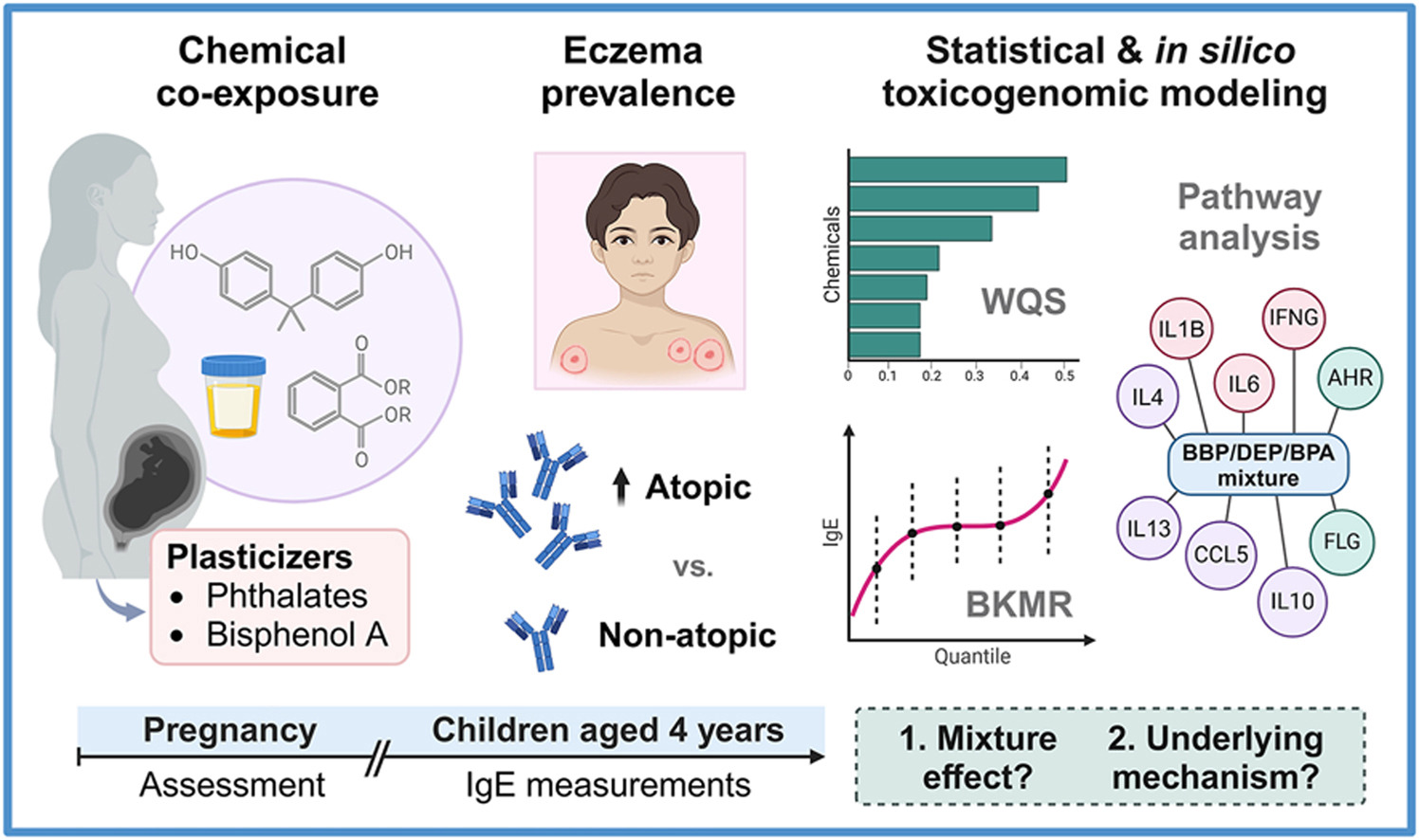“Healthy beginnings, hopeful futures” is this year’s theme of the World Health Day 2025, which emphasizes the need to promote the health of mothers and their newborns.
Pregnancy and childhood are critical stages for establishing lifelong health and well-being, yet they also represent vulnerable periods of life when exposure to everyday chemicals with endocrine-disrupting properties (EDCs) can increase the risk of adverse health outcomes. EDCs interfere with the hormone system which regulates development, growth and metabolism. Exposure to EDCs is likely to be associated with diseases such as reproductive disorders, neurodevelopmental disorders, or metabolic diseases including obesity and diabetes.
The effect of chemicals adds up in complex mixtures
At ENDOMIX, we are committed to uncovering the hidden impact of EDCs on human health at critical life stages, with a focus on the immune system, to better protect vulnerable populations. While most studies focus on the exposure of single chemicals, the effect of chemical mixtures from fetal development onwards is often overlooked and thus prevents an accurate assessment of the risk to EDC exposure.
Recently, our research partners analyzed blood samples from pregnant women to assess exposure to environmental chemicals. While individual chemicals were detected at concentrations below the effect threshold, they interacted in complex mixtures, leading to a cumulative neurotoxic effect (Braun et al., 2024, Science). The advanced high-throughput methodologies developed in this study provide a strong foundation for further investigations within the ENDOMIX project.
Real-life PFAS mixtures can have a negative impact on placenta health
Per- and polyfluoroalkyl substances (PFAS), commonly found in products such as cookware, carpets, and textiles, are manmade chemicals that persist in the environment and disrupt endocrine function. In a recent study at UFZ, researchers extracted a concerning PFAS mixture from first-trimester placenta tissue and demonstrated its negative impact on cell viability and key placental functions, including hormone production and cell invasion, using trophoblast spheroids as a model for the human placenta (Xia et al., 2024, Toxicol. Lett.). The alarming results highlight the urgent need for evidence on the effects of EDC mixtures on fetal development, neonatal health, and beyond, to guide regulatory bodies and policymakers in risk assessment and reducing EDC exposure.
Chemical exposure impacts future generations
As we mark World Health Day 2025, the ongoing commitment to understanding and mitigating the impact of EDCs is more crucial than ever. Through the ENDOMIX project, our partners will continue to expand this research, with a focus on the combined effects of chemical mixtures on human health, particularly at vulnerable stages such as pregnancy and early childhood. By advancing methodologies and incorporating new data, we aim to provide more comprehensive insights into how these exposures affect both the immune system and long-term health outcomes. The findings from ENDOMIX will contribute to the development of effective strategies and policies to reduce the risks of EDCs exposure, ensuring healthier beginnings and a hopeful future for all.
As we mark World Health Day 2025, the ongoing commitment to understanding and mitigating the impact of EDCs is more crucial than ever. Through the ENDOMIX project, our partners will continue to expand this research, with a focus on the combined effects of chemical mixtures on human health, particularly at vulnerable stages such as pregnancy and early childhood. By advancing methodologies and incorporating new data, we aim to provide more comprehensive insights into how these exposures affect both the immune system and long-term health outcomes. The findings from ENDOMIX will contribute to the development of effective strategies and policies to reduce the risks of EDCs exposure, ensuring healthier beginnings and a hopeful future for all.



